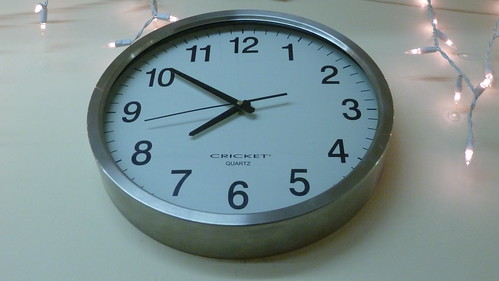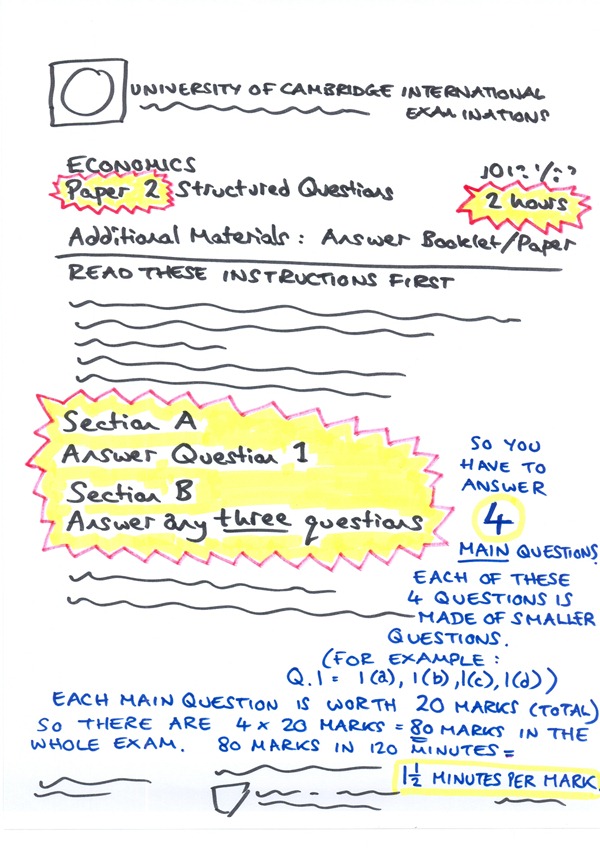Posts tagged exam technique

Quizzes and an IGCSE Past Paper Question to Assess Your Understanding of Demand, Supply and Market Equilibrium
Nov 11th

Image: Some rights reserved by Valerie Everett
a) Exploring Supply and Demand by Kim Sosin – useful in that you can get feedback on the impacts on the Supply and Demand graph, shown on the right hand side of your browser.
b) True/False Quiz hosted on a http://www.oup.com site.
c) SELF-GRADING PRACTICE QUIZ #3 via http://www.sscnet.ucla.edu
The following four quizzes by Pearson via http://wps.aw.com are good means of testing your understanding of demand, supply,and the market equilibrium. Usefully, at the end of each quiz you can email your results to yourself and your teacher.
d) Quiz 1
e) Quiz 2
f) Quiz 3
g) Quiz 4
Source: CIE Economics Paper 4 Exam, May/June Session 2002

Applied Macroeconomics – Evaluating Demand Side Policies
Nov 2nd
Aims:
· To recap the Paper 1 Mark Scheme
· To revise learning on the macroeconomic equilibrium, Keynesian and neoclassical perspectives and demand side policies.
· To apply the above learning to examples, both theoretical and real-life.
· To develop critical analysis and evaluation skills.
Step 1 – Recap Exam Technique
· Remember the Paper 1 Mark Scheme
· Remember the tips on evaluation
Step 2 – Analyse a Theoretical Scenario.
Image: Some rights reserved by APMus
You should ideally work in a pair or three and, as a team, will analyse the likely macroeconomic impacts of one of the following scenarios.
1) Government announces a large increase in spending on health and education.
2) Chancellor announces tax exemption scheme on new investments for small to medium sized firms.
3) Average wage rises way above inflation for the third month running.
4) Exchange rate appreciation knocks export hopes for manufacturing.
5) Institute of Directors (IOD) latest survey shows clear signs of optimism for the future of the economy
6) Central Bank signals rise in interest rates of ½%
- You should include at least one diagram.
- You should evaluate the likely effects – how strong will the impact be?
- There may not be one single answer – you simply need to be able to justify your predicted outcomes. Evaluation often needs to look at the assumptions we start with – you should be clear about what you are assuming.
Prepare a presentation (using for example Google Docs Presentation on MS Powerpoint) and prepare between two and four slides to show and explain the effects.
Step 3 – Analyse a Real Life Scenario.
Image: Some rights reserved by RambergMediaImages
You ideally need to form different pairs / threes in which you will be able to offer feedback to each other.
Each pair focuses on a region of the world, and each person selects a separate and current headline and article related to a demand side policy that has been introduced by the government there.
· North America
· South America
· Europe
· Africa
· Asia (not Thailand)
· Thailand
You need to summarise:
· Why there was a need for the demand-side policy
· The likely impact and successes / shortcomings of the policy.
· Include reference to at least one diagram
Try to use all of the techniques needed for a top scoring evaluation based essay.
Create a Google doc (or some similar document) that you will share with your partner(s).
A suggested site to search on: http://news.google.co.uk/
Here is the evaluation spreadsheet to provide feedback with. Make a copy and share it with your partner to offer them feedback with.

How Long Should You Spend On the IGCSE Economics Paper 2 Questions?
Mar 8th
A very important key to exam success is to get the timings right.
Timings can go wrong in two ways:
- You spend far too little on all questions and have time to spare at the end. If you spend a lot of time doing nothing in your exam, this has a serious ‘opportunity cost’ …
- You take too long on earlier questions, so you don’t leave enough time at the end for later questions and lose valuable marks on these.
You need to use the clock (and a bit of quick mental maths) to your advantage.

Image: Some rights reserved by bastique
Timings
Paper 2 lasts 2 hours.
You have 4 main questions to answer.
You really should stick to 30 minutes per main question.
Each main question is worth 20 marks and is made up of smaller questions. Look at the example below from the specimen paper:
Source: University of Cambridge International Examinations – IGCSE Economics Site
Direct link to specimen paper here
Very important: Section B has 6 main questions to choose from but you only answer 3 of them (giving a total of 60 marks for section B).
You must also answer Question 1 in Section A (worth 20 marks).
The graphic below is a mock up of what the front page of the exam looks like. Check the specimen paper (or any other paper such as the past paper also hosted on the website given above). This graphic highlights the key bits for timings and the words in blue help explain why each mark has one and a half (1.5) minutes for you to spend on it.
You should get in the habit of seeing how many marks a question is worth and then quickly calculating how many minutes you should spend on it. Keep an eye on the clock.
So a smaller 6 mark question deserves 9 minutes of exam time.
Please note that 1 and a half minutes per mark includes reading and checking time.
The shorter 2 or 3 mark questions probably will not need the full 3 or 4.5 minutes. These are often definition questions. They might only take one minute to answer, so you ‘save’ something like two minutes from these questions for your overall reading and checking.
The longer questions 4, 6, 8 or 10 marks (for example) should get their full time from you. So aim to spend a full 6 minutes on a four mark question, etc.
At the very least, stick to timings for the main questions:
Each main question (worth 20 marks each in total) deserves a full 30 minutes from you – no more and no less.
The best way to get all of this is simply to practice past paper questions as often as you can while sticking to the timings. If you do this, you’ll soon get a fell of how much you should be writing on different length questions.







